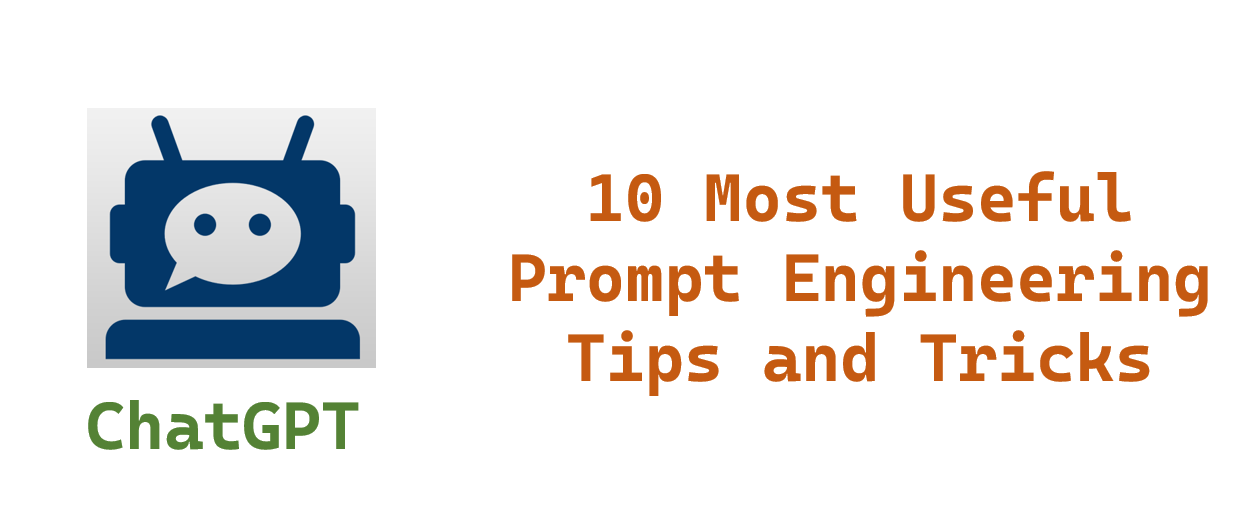10 Most Useful Prompt Engineering Tips and Tricks
Table of Contents
As a prompt engineer, your goal is to design effective prompts that help guide an AI language model like ChatGPT to produce useful and relevant responses. Here are some useful tips and tricks for prompt engineering:

Be specific
Clearly define the context and goal of the prompt to guide the AI towards producing the desired response. Avoid ambiguity and provide as much relevant information as possible.
- Vague: “Tell me about the economy.”
- Specific: “Explain the concept of supply and demand and its role in a market economy.”
Experiment with different phrasings
Try various ways of asking the same question or giving the same instruction. Slight differences in phrasing can lead to different results.
- Original: “What are the benefits of exercise?”
- Alternative: “List the advantages of engaging in regular physical activity.”
Use step-by-step instructions
For complex tasks, break the prompt into smaller, more manageable parts. This can help the AI focus on each aspect of the task and improve overall results.
- “First, explain how photosynthesis works in plants. Next, describe the role of chlorophyll in this process. Finally, discuss the importance of photosynthesis for life on Earth.”
Set the response format
Clearly state the desired format for the AI’s response, such as a list, a summary, or a detailed explanation. This can help the model provide the information in the most useful way.
- “Provide a summary of the novel ‘To Kill a Mockingbird’ by Harper Lee in three to five sentences.”
Limit response length
If you want a concise answer, specify the desired word or sentence limit. This encourages the AI to be more focused and direct in its response.
- “Explain the greenhouse effect in 50 words or fewer.”
Request multiple solutions
If you want the AI to think outside the box or provide multiple perspectives, ask for several different suggestions or solutions.
- “Suggest three different ways to improve air quality in an urban environment.”
Use examples
Provide examples of the desired output to guide the AI. This can help clarify the task and give the model a better idea of what you’re looking for.
- “Write a brief movie synopsis similar to this example: ‘In the sci-fi thriller Inception, a skilled thief uses dream-sharing technology to steal valuable secrets from his targets. When offered a chance at redemption, he must perform the seemingly impossible task of planting an idea in someone’s mind.'”
Adjust the AI’s behavior
In some cases, you might want the AI to adopt a specific tone or perspective. You can specify this in your prompt, for example, by asking the AI to explain a concept as if it were a teacher.
- “Explain quantum mechanics as if you were a teacher addressing high school students with no prior knowledge of the subject.”
Iterate and refine
Test multiple versions of your prompt to find the most effective one. Learn from the AI’s responses and adjust your prompt accordingly.
- Initial prompt: “What are the best exercises?”
- Refined prompt: “What are the most effective exercises for building cardiovascular endurance and muscle strength?”
Leverage external references
Sometimes, it can be helpful to ask the AI to look up information or consult a specific source. Keep in mind that the AI’s knowledge is limited to what it was trained on and might not include the most recent or obscure sources.
- “According to the World Health Organization’s guidelines, what are the recommended levels of physical activity for adults aged 18-64?”
Remember that prompt engineering is an iterative process that may require experimenting with different techniques to achieve the best results. Continuously refine your prompts based on the AI’s responses to improve its performance.